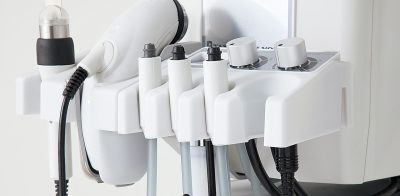
Maintaining the Beauty: A Guide to Beauty Equipment Repairs
In the realm of beauty and wellness, the efficiency of equipment is paramount. From hair salons to spas, every establishment relies on a myriad of tools and machines to deliver top-notch services to their clients. However, like any mechanical or electronic device, beauty equipment is susceptible to wear and tear over time. The last thing any salon or spa wants is for their equipment to fail in the middle of a busy day. That’s where understanding beauty equipment repairs becomes crucial.
Understanding Common Issues
Before delving into repairs, it’s essential to identify common problems that beauty equipment often encounters. These issues can range from minor malfunctions to more severe technical faults. Some prevalent problems include:
- Electrical Malfunctions: Power failures, faulty wiring, or issues with switches and controls are common electrical problems.
- Mechanical Failures: These include issues with moving parts, such as jammed motors, broken belts, or malfunctioning pumps.
- Wear and Tear: Over time, equipment can suffer from general wear and tear, leading to diminished performance or functionality.
- Component Damage: Accidents or mishandling can cause damage to specific components, such as cracked casings or shattered screens.
Importance of Timely Repairs
Promptly addressing equipment issues is vital for several reasons:
- Maintaining Efficiency: Malfunctioning equipment can disrupt operations and compromise service quality, leading to dissatisfied customers and loss of revenue.
- Ensuring Safety: Faulty equipment poses safety hazards to both clients and staff. Timely repairs mitigate these risks and create a safe working environment.
- Preventing Costly Replacements: Ignoring minor issues can exacerbate problems, eventually necessitating costly replacements. Regular maintenance and repairs extend the lifespan of equipment, saving money in the long run.
DIY vs. Professional Repairs
While minor repairs can sometimes be handled in-house by knowledgeable staff, complex issues require the expertise of trained professionals. Attempting DIY repairs without adequate skills and experience can worsen the problem or void warranty agreements. Professional repair services offer:
- Expertise: Technicians specialized in beauty equipment repairs possess the knowledge and skills to diagnose and fix various issues accurately.
- Access to Parts: Repair services often have access to genuine replacement parts, ensuring optimal performance and compatibility.
- Warranty Protection: Opting for authorized repair services helps maintain equipment warranties, protecting your investment in the long term.
Implementing Preventive Maintenance
Prevention is always better than cure, and this holds true for beauty equipment maintenance. Establishing a proactive maintenance routine can help minimize the frequency of repairs and prolong the lifespan of your equipment. Key preventive maintenance practices include:
- Regular Inspections: Conduct routine inspections to identify any signs of wear, damage, or malfunction.
- Cleaning and Lubrication: Keep equipment clean and well-lubricated to prevent dirt buildup and reduce friction on moving parts.
- Calibration and Testing: Periodically calibrate equipment and perform diagnostic tests to ensure optimal performance.
- Staff Training: Educate staff on proper equipment usage and maintenance procedures to prevent avoidable damage.
In the fast-paced world of beauty and wellness, the reliability of equipment is non-negotiable. Understanding the importance of timely repairs, distinguishing between DIY fixes and professional services, and implementing preventive maintenance measures are essential for ensuring the smooth operation of your salon or spa. By prioritizing equipment maintenance and repairs, you not only safeguard your investment but also uphold the standards of excellence that define your business.
“`

